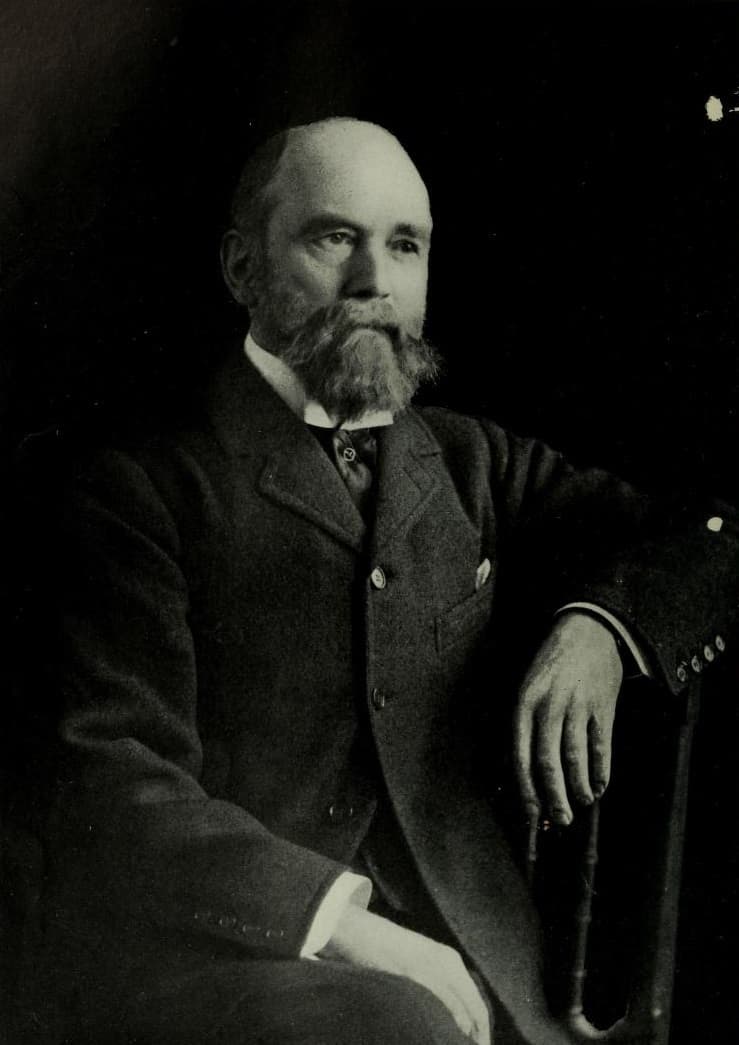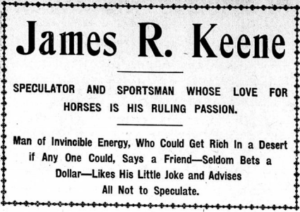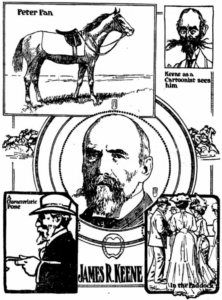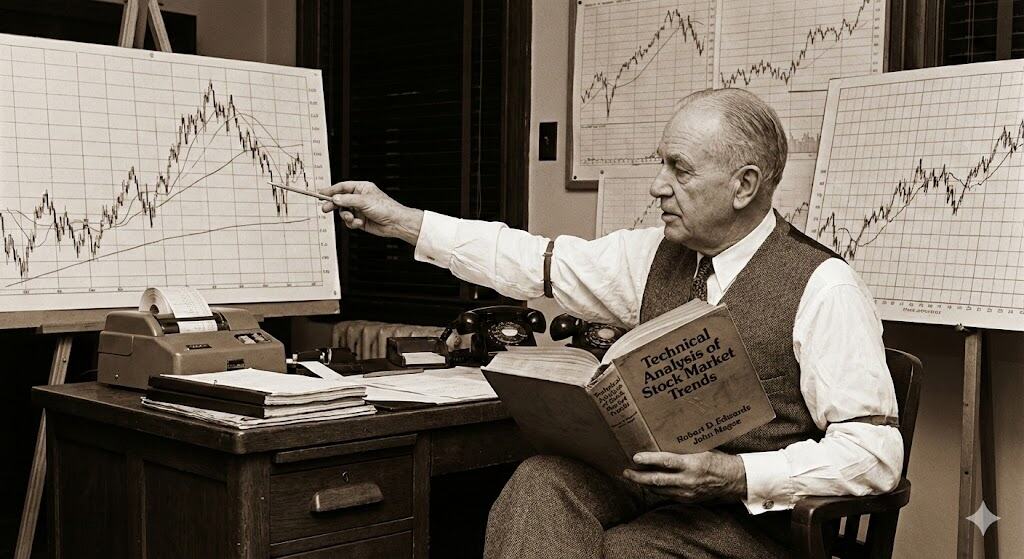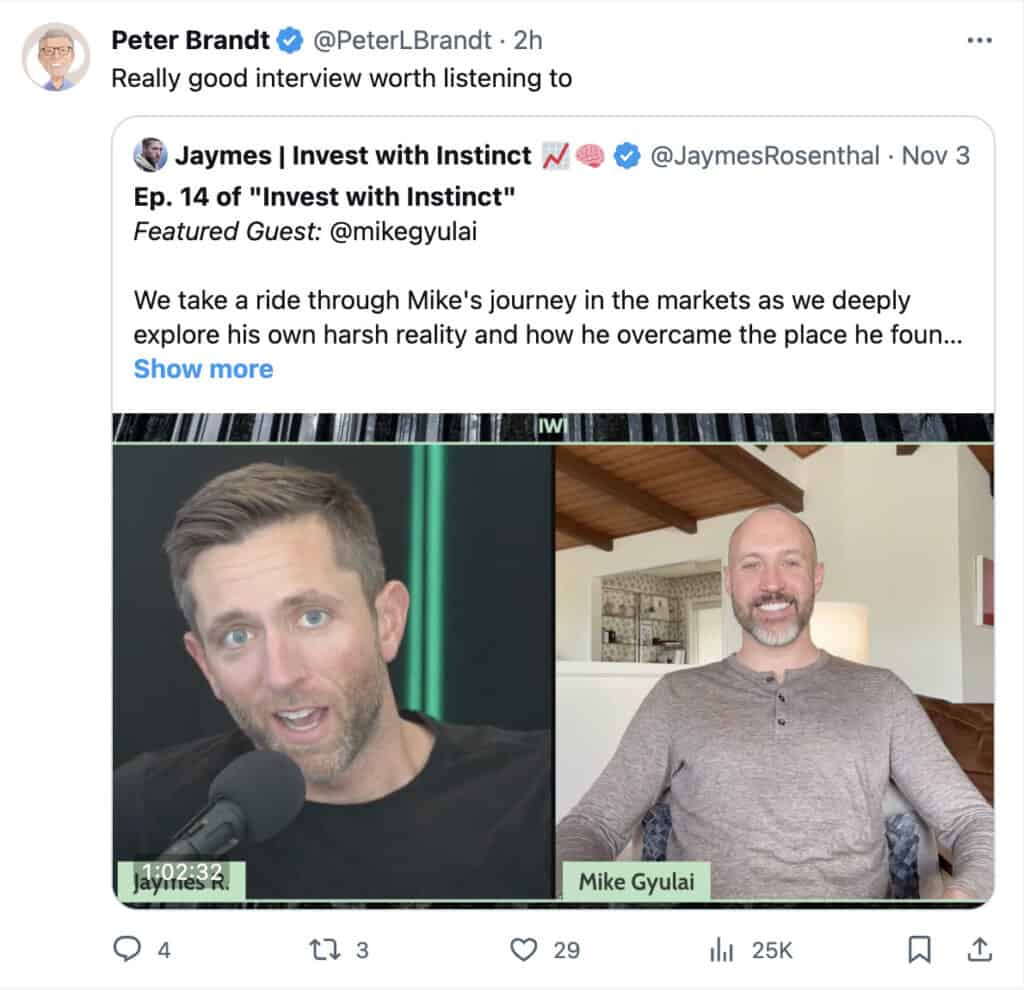While digging into old articles about James R. Keene for a piece I’m writing I came across this nugget that I have to share — it’s so good. For those of you not familiar with Keene, he is one of the most successful market operators of the late 19th century. Jesse Livermore, when talking about the trading legends of his day, called Keene the “greatest of them all”. The man made and lost fortunes many times over and lived a life full of color.
Here’s the article, written by Robertus Love in The Princeton Union on July 11, 1907.
Enjoy…
~~~~~~~~~~~~~~~~~~~~~~~~~~~~~~~~~~~~~~~~~~~~~~~~~~~~~~~~~~~~
Just now those who take an interest in turf matters are hearing much about the winnings of James R Keene’s horses. It is the horses that win, not the horseman. Mr. Keene seldom bets a dollar. He is not a sport. Neither on the turf nor on the stock market does he gamble. He is a speculator on the market and a sportsman on the turf. Between a speculator and a plunger the gulf is quite as wide as that between a sportsman and a sport. These distinctions should be borne in mind by any one who cares to know the character of James R. Keene.
Both as speculator and sportsman Mr. Keene’s reputation clicked into the top notch at least a quarter of a century ago. It is a question whether his cash or his colts have brought him the wider distinction.
Born in London sixty-eight years ago, of a father who also was a native of England, Keene nevertheless is really an American. His ancestors back of his father lived in Virginia for several generations. Moreover, when the father failed in business abroad the family came to America, settling in California when young James was only about fourteen.
The boy got a job taking care of cows and mules at a military post. He worked at various occupations until he grew up, when he studied law. For a time he taught school. Then he edited a country newspaper at a place called Horsetown, in northern California. The name of the town probably had no particular influence upon Mr. Keene’s career. The late Charles A. Dana, who used to read the Keene editorials, maintained to the last that for style, force and lucidity the pen of no English writer since the days of Charles Lamb surpassed that of Keene when he edited the Horsetown sheet at a salary of $20 a week.
Had Literary Ambitions.
Keene, according to Joaquin Miller, who also frequented that part of California in those days, had literary ambitions. But as Shasta county journalism was not a money making institution he shortly stepped off this stepping stone to the literary life, and America lost a Charles Lamb. Keene, it is said, peddled milk, clerked around here and there and finally found himself in the mining camp of Virginia City, Nev. In some unrecorded manner he managed to get together a stake of $10,000. About this time Miss Sarah Daingerfield, a Virginia belle, visited her brother, a United States judge. Keene met her and fell In love. But Judge Daingerfield scorned the young man who had descended upon San Francisco and become a curbstone broker. “An upstart curbstone broker,” sneered the judge. “Huh!'”
Nevertheless Keene loved well. Love and luck ran together. Keene soon increased his cash to $175,000, married the girl and set up housekeeping on a lavish scale. By the time he had doubled his fortune a crash came, and in one day he was wiped out to the basement, so that he was compelled to part with his splendid household furnishings. “Go get a job now, Jim,” his friends all advised. “That’s all you can do.”
Nobody had any confidence in Keene’s speculative ability—that is, nobody but himself. He believed that he could make good. He kept to the curbstone and hoed a mighty hard row until he met Senator Felton of California. The senator had a seat in the San Francisco Stock Exchange. He liked Keene. When Felton became assistant United States treasurer he gave Keene his seat on the exchange, to be paid for at whatever it might be worth when the young man was able to pay.
A few months later Keene paid Felton several times the value of the seat at the time he acquired it, but he was making money so rapidly that the outlay was not felt. By 1876 James R. Keene had made several millions — some say $6,000,000 — by speculating in mining stocks during the “Bonanza” period. Then his health failed and he determined on a trip to Europe.
When Keene reached New York the Wall street atmosphere so charmed him that he did not go to Europe for fifteen years. He stayed in Wall street and speculated. One of the most familiar stories of the street is to the effect that somebody remarked to Jay Gould, then the wizard of Wall street.
“They say Jim Keene, the California millionaire, is coming to New York in a palace car.”
“All right,” returned Gould. “I’ll send him back in a box car.”
Those were the days of the individual speculator. This is the day of combinations. Keene went it alone, used his judgment and made large winnings. But Jay Gould was after his scalp. By the year 1884 Keene’s fortune had more than doubled. Then he got into a combination against his own judgment to corner the world’s wheat market. Just when it seemed that all was ready for the big rake off Jay Gould and others sprang a coup that came near shipping Keene back by the box car route. There is still in the street the tradition of a forged telegram which split the corner and smashed Keene to smithereens. When he crawled out from under the avalanche he was about a million and a half in debt. Everything went, including one of Rosa Bonheur’s masterpieces, “Sheep,” which was the pride of Keene’s household. A little later a gentleman now well known in New York journalism had occasion to call at Jay Gould’s residence on Fifth avenue. Gould pointed to a magnificent oil painting on the wall.
“See there,” he said exultantly. “There hangs the scalp of James R. Keene.”
The painting was Rosa Bonheur’s “Sheep.” Gould had bought it at a fabulous price from the man who bid it In at the Keene sale. Gould gloated over it. As a work of art it meant little or nothing to the wizard, but as his badge of victory it was to him a trophy as satisfactory as is the dripping scalp of a paleface to an Indian chief. Wall street sometimes makes men so.
But Keene, when he heard of this incident, did not faint. Referring to the manipulations by which he had been cleaned out, he said:
“This has taught me caution, and the lesson will be worth while. I will still walk Wall street when every man of the band that has plotted my ruin and worked it will be either dead or bankrupt.”
Still Walks Wall Street.
Jay Gould has been dead these many years. Keene still walks Wall street, having paid off all his debts and made several fortunes since 1884. But for some years Keene was not so much of a figure in the street. Again they said that he was down and out, just as they had said it when he first lost his money in San Francisco. He became during those years more of a promoter than an independent operator. Having eaten of bitter bread in the wheat corner, Keene took up something to sweeten existence. He boomed sugar for the Havemeyers. Incidentally he boomed it for Keene, sweetening his tooth to the extent of some $2,000,000.
Then Keene bit off a large chew of tobacco, but not larger than he could chew. Practically the same ring that had tripped him up in the wheat bin tried to strangle him with tobacco juice, but Keene was keeping his own counsel then. He had grown cautious. He rushed 75,000 shares of tobacco into the market, the price dropped from 156 to 115. The ring lost and Keene won a million and a half in a day.
“Give a man rope enough and he will hang himself,” says a wise one. Keene took a lot of rope—American Cordage—and added a few more millions to his pile, incidentally stringing up a few of his enemies.
By that time, which was a matter of nine or ten years ago, James R. Keene had succeeded in convincing Wall street that if he ever returned to California he could go in his own private palace car or in an airship if he preferred to take that risk. There have been ups and downs since, but never an out, though it is understood that Mr. Keene lost largely by the failure of his son-in-law’s firm, Talbot J. Taylor & Co, about four years ago. But the Keene family larder was secure in any event. Many years ago a silent partner, Mrs. Keene, persuaded her husband to give her half of his earnings. When Mr. Keene made a million Mrs. Keene was half a million richer. As the silent partner did not speculate, the money remained in the family.
His First Big Horse Victory.
Mr. Keene is known as a man of indomitable energy. “He could get rich in a desert if any one could,” says an intimate associate. This recalls a story in connection with the first big horseflesh victory of Keene’s career. His horse Foxhall won the Grand Prix at Paris in 1881. Twenty years earlier Keene had been at his Horsetown stage, and one of his acquaintances In the California country was Dan Gaitland. When Foxhall won the Grand Prix, Dan was still prospecting up in Grant county, Ore., not far north of Horsetown. He heard the news and rushed into the presence of Tom Merry, another acquaintance of the California Keene.
“Tom,” said Dan, “did yez hear phwat Jim Keene done las’ Sundah?”
“And what was that?”
“The papers sez he bate the divil out iv the frog eaters wit’ a horse named Foxyhall.”
“Well,” said Tom, “from what I remember about Jim he’s a mighty hard man to keep down.”
“Roight ye be,” rejoined Dan. “Ye cud putt Jim Keene aboard a ship an’ send him to say, an’ if the ship wuz wrecked on a desert oisland Jim ‘uld be walkin’ around, he wud, an’ the nex’ day he’d be sellin’ maps iv the place to all the natives.”
Mr. Keene has owned some of the greatest horses on the turf. This season his colt Peter Pan earned $52,000 in four races in less than thirty days. He owned Domino, over whose Kentucky grave he erected a hand some marble shaft. Other great ones developed by Keene were Sysonby, Commando, Cap and Bells and Tommy Atkins.
Dearly Loves Horses.
Mr. Keene’s love for horses is his ruling passion. One day a horse fancier whom Keene had met in Kentucky called to see the great financier in his New York offices. Half a dozen men were in the anteroom. The Kentuckian finally requested the young man to tell Mr. Keene that Bill Scully of Kentucky had dropped in to say “Howdy.” Scully started away, but as soon as the millionaire heard that he had called the door flew open, and Keene rushed out into the hall, yelling:
“Hey, Bill! Here, Scully!”
When Scully was dragged into the inner sanctum he protested that he was taking up Mr. Keene’s time.
“Not by any means,” replied Keene. “I can talk stocks any day, but it isn’t often that I get to talk horse with a Kentuckian.
There is nothing saturnine about Keene. He likes his little joke. Not long ago he was reading a review of certain financial undertakings when he reached this sentence:
“It was then that the Rockefeller stocks came to the relief of these agitated, overcapitalized properties.”
“That’s a disguised way of saying that John D. poured oil on the troubled waters,” remarked Mr. Keene.
A country boy in Indiana wrote Mr. Keene that he wanted to make a fortune, but so many doors were closed to him that he didn’t know which one to open. “Open the one labeled ‘Push,'” wrote back the financier.
James R. Keene has one word of advice to all persons who evince a disposition to speculate: “Don’t!”

